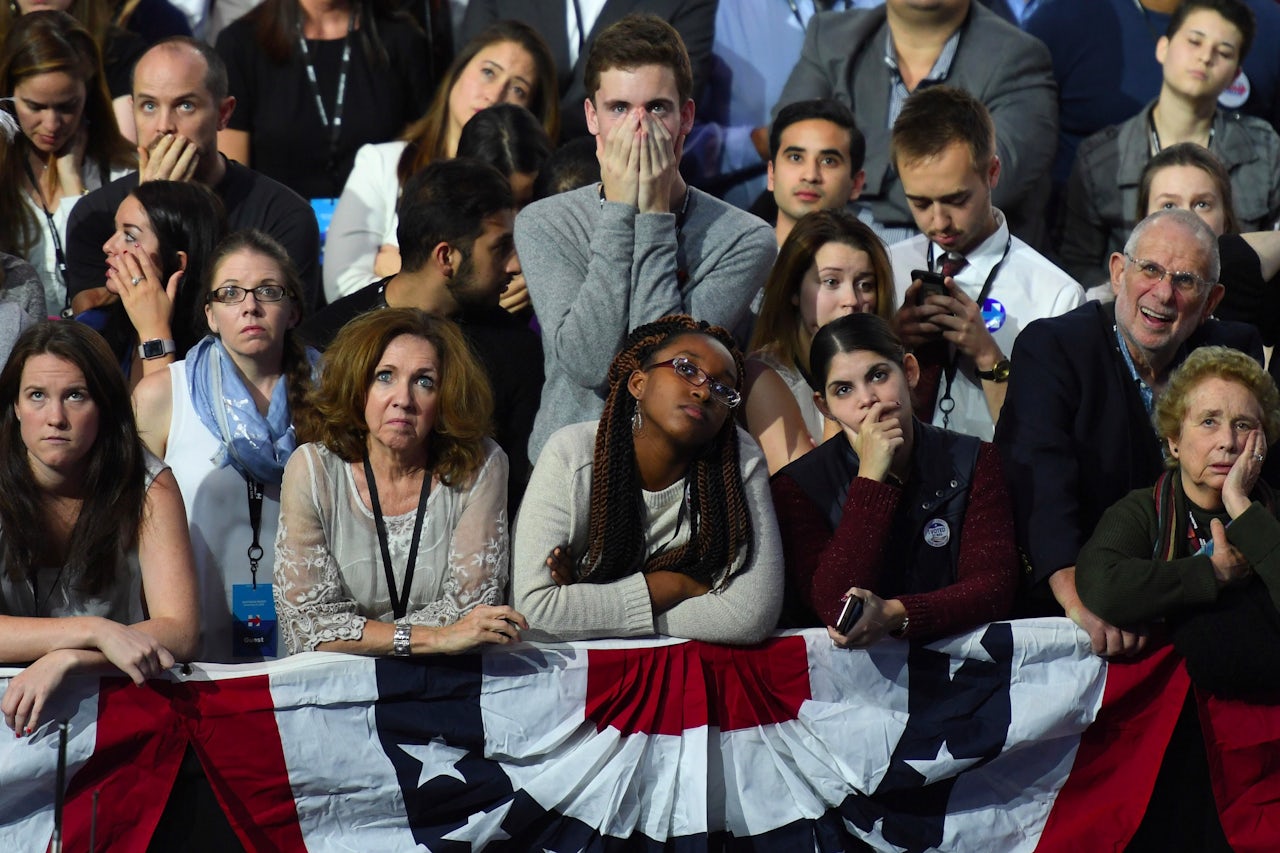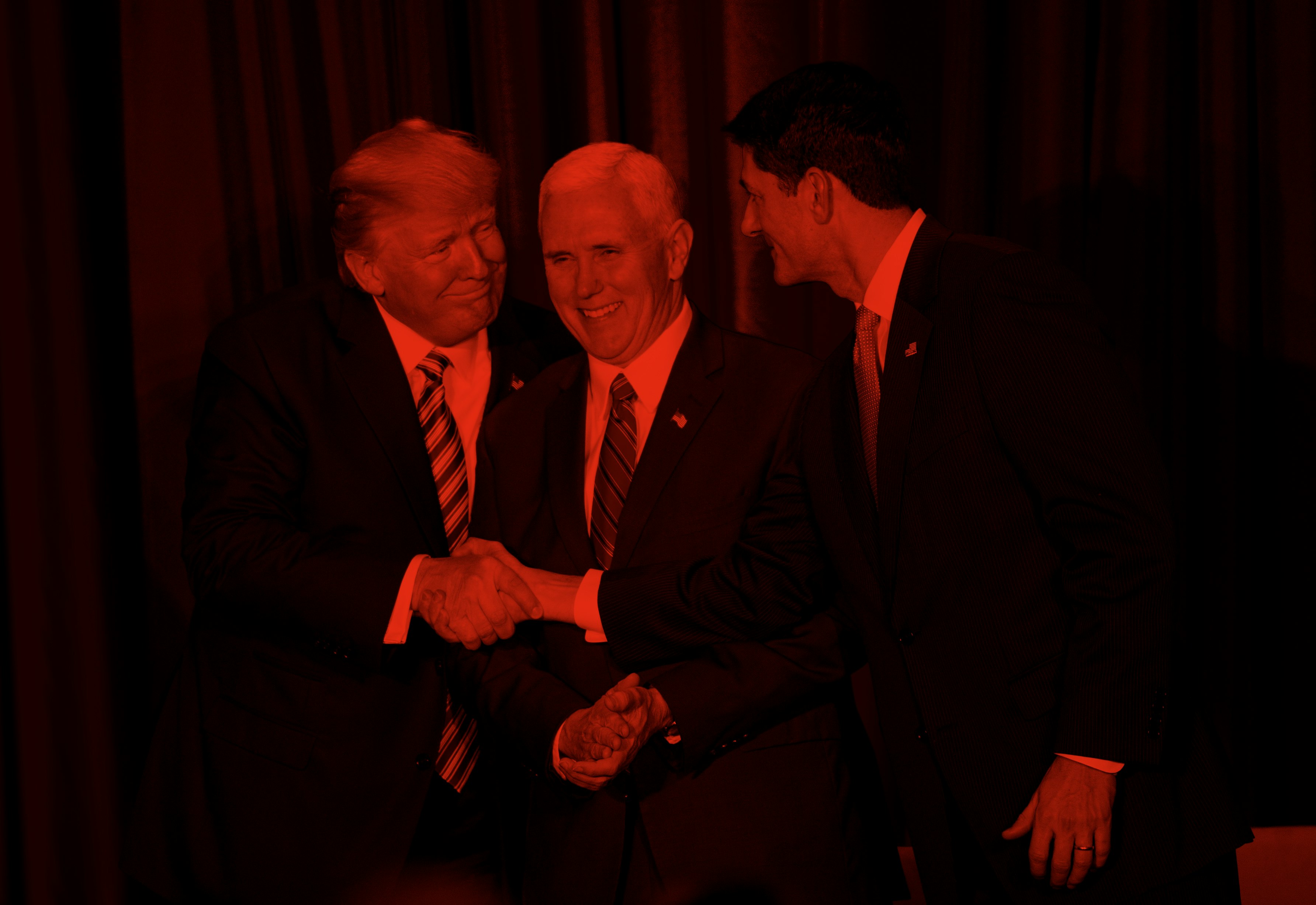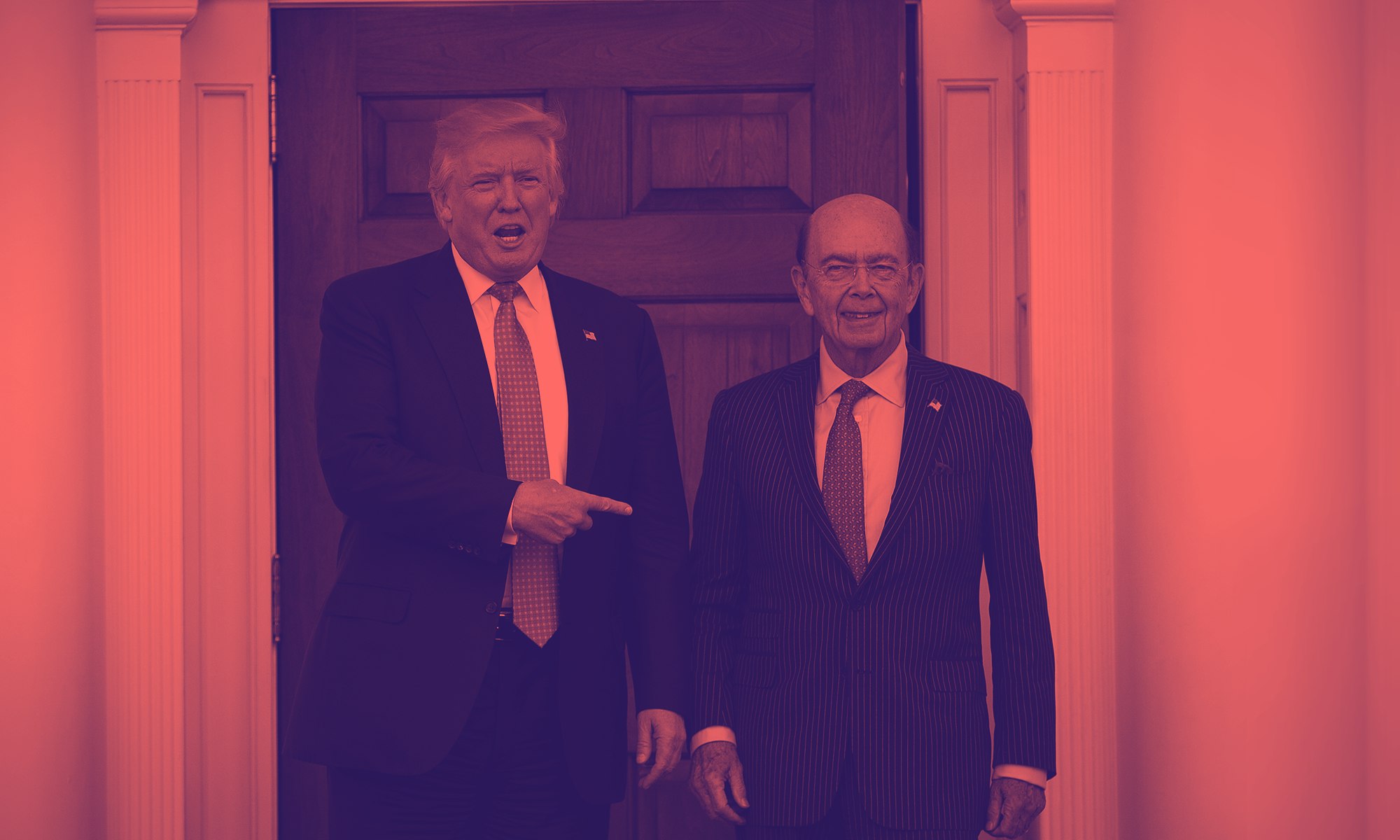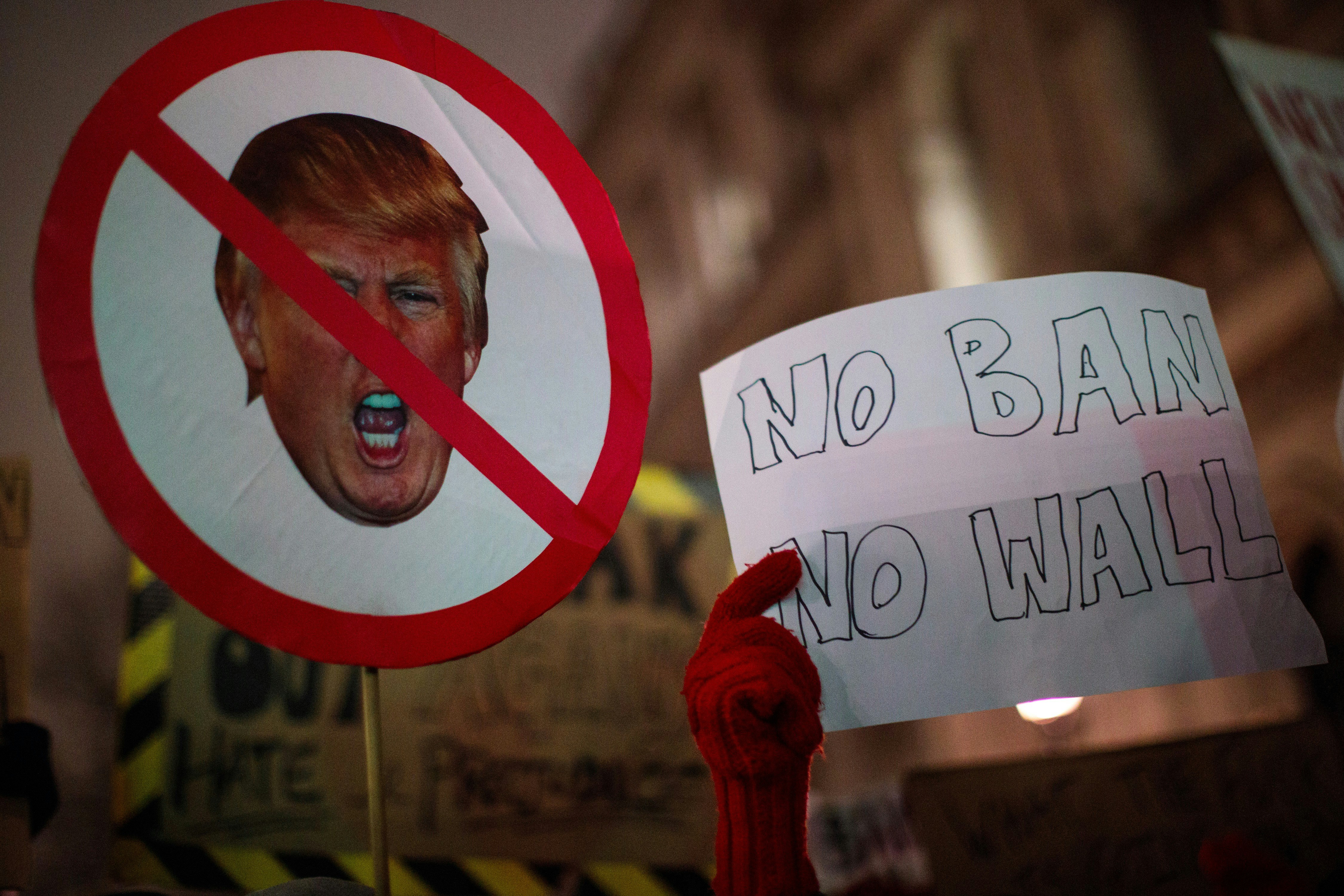You can try to overstate the dire shape the Democratic Party is in, but it’s not very easy. Since 2009, the party has lost control of the Senate, House, most governors’ mansions, and the presidency. It is about to lose the Supreme Court for a generation, and Donald Trump will have incredible latitude to reshape the federal judiciary. The party in power tends to lose seats while it controls the presidency, and Democrats were no exception: Between 2009 and 2016, they lost 11 Senate seats, 63 House seats, 13 governorships, and 968 state legislature seats. Even using a more conservative metric of losses (by comparing the party’s standing from the 2006 midterm), Democratic state legislature seat losses during Obama’s tenure exceeded his predecessors’ (though his performance at the federal level was more in line). Democrats have unified control (of the legislature and governorship) of six states, while Republicans control 25.
What is unique about the current political climate is how Republicans have wielded this power: to structurally shift the political system in their favor by crushing unions, gerrymandering districts, and suppressing votes.
Some commentators have expressed a blasé attitude toward the Democratic Party’s future prospects, casting Trump as a nasty setback but little more. For instance, political scientist Philip A. Klinkner writes, “Overall, there’s nothing wrong with the Democrats that losing the presidency probably won’t fix.” However, as political scientist Frances Lee shows, there are long periods in which politics has been dominated by one party or another with blowout elections. Democrats, for instance, controlled the House for decades in the ’70s and ’80s before Newt Gingrich famously swept Republicans to power in the ’94 midterms. The idea that a bounce-back is inevitable also ignores one of the most important asymmetries between the parties: The Republican Party has no qualms about using its control of states to solidify its power, often in deeply undemocratic ways. While Democrats puzzle their way back to power, it’s worth understanding the barriers they face.
Gerrymandering
Republicans have begun to shape the structure of the political system in their favor using their control of Statehouses. In 2010, they launched a project called REDMAP (REDistricting MAjority Project), aimed at winning over state legislatures and governorships in order to control the redistricting process. Though gerrymandering often happens, the partisan gerrymanders that Republicans implemented in 2010 are more nakedly partisan than in the past and overwhelmingly favor the GOP. With Democrats out of power in so many states, they had no way to stop the most egregious gerrymanders before they were implemented. The legal system takes time to correct these flaws, and in the meantime, the GOP has racked up seats.
In 2012, Republicans won 46.9 percent of votes but 53.6 percent of seats. That means, despite Democrats winning 1.4 million more votes than Republicans, they still had a massive, 33-seat deficit. In 2014, Republicans won 50.6 percent of votes but 56.9 percent of seats. In 2016, Republicans won 49.9 percent of the votes but 55.2 percent of seats. This doesn’t just hold true at the federal level: Republicans have deeply gerrymandered state legislatures. For instance, in Michigan, Democrats have won more votes in the Statehouse elections in five of the seven elections between 2002 and 2014 but won a majority of seats only twice. Democrats would need to win power at the state level to reverse the most egregious gerrymanders, but their path forward looks increasingly rocky.
The collapse of unions
Republicans have used their control of Statehouses to crush unions by passing right-to-work laws and other limitations on union bargaining power. Right-to-work laws allow non-unionized workers in unionized workforces to avoid an agency fee to unions for the purposes of representation and bargaining. These laws drain union coffers, impeding their ability to organize. During Obama’s tenure, four new states became right-to-work (Indiana, Michigan, Wisconsin, West Virginia), all of them states where Democrats were once competitive and unions were the backbone of that success. In 2017, following Republican state-level victories, Missouri and Kentucky became right-to-work. Already, Republicans have floated the idea of a national right-to-work law, which would end private sector unions as we know them. When Trump adds another conservative to the Supreme Court, it’s likely that it will strike a blow to laws that allow public sector unions’ states to collect “agency fees” from nonunion workers.
This has important implications for the Democratic Party and for policy. Political scientists Benjamin Radcliff and Martin Saiz found that the strength of unions in a state is a more powerful determinant of liberal policy in the states than the power of the Democratic Party. Economist James Feigenbaum, an assistant professor at Boston University, studied the impact of right-to-work laws for as-of-yet unpublished research he shared exclusively with The Outline. He analyzed counties at the borders to two states and found that the passage of a right-to-work law reduces Democratic vote share by 2-4 points in presidential elections and 3-5 points in Senate elections.
In Iowa, Republicans recently passed laws to gut collective bargaining rights for public sector unions. The only person in the room when Gov. Terry Branstand signed the law was Drew Klein, the state director of Americans for Prosperity. That’s not entirely surprising. Political scientists Hertel-Fernandez and Theda Skocpol found that the presence of a paid Americans for Prosperity (AFP) director in a state increases the likelihood of a state passing laws that reduce public sector bargaining rights by close to 30 points. In a new working paper, Hertel-Fernandez found that the passage of such laws reduces public sector union density by about 5 percentage points and the impact on union revenues is approximately $1.51 per worker. He also found that these laws result in less political activity by union members and more conservative policy outcomes.
Given that churches and unions are two of the most powerful organizing forces in the country, it’s difficult to see any place that Democrats can recreate this level of organizing. Indeed, many groups designed to do so have withered on the vine (and some, like ACORN, were brought to an early grave with help from Democrats). In the wake of his election, Obama’s team dismantled the movement that elected him in order to play an inside game (passing laws through deal-making that progressives might find disdainful). Without unions, as the Democratic Party struggles to compete in states that it used to win, it may become less wedded to economic progressivism.
Money in politics
Republicans have also unleashed the floodgates of money into politics, allowing them to leverage their massive fundraising advantage into state-level victories. A recent study in the journal Political Science and Research Methods by political scientist Andrew Hall found that a fundraising advantage can turn into political power. As he explained, “A 1 percentage-point increase in the Democratic (or Republican) Party’s share of all contributions in an electoral cycle is estimated to increase its share of the legislature by roughly half a percentage point.” One study found that the Citizens United decision increased Republican election chances in Statehouse races by 4 percentage points. Another study found a similar effect, and also found the effect is conditioned by the power of labor and corporations. In states with weak labor unions, Citizens United bolstered Republican seat share by up to 12 percentage points. The evisceration of unions and rise of money in politics creates a one-two punch, creating a long uphill battle for Democrats.
Restrictions on the franchise
Republicans have aggressively used their state-level power to restrict voting rights. North Carolina, which once had sterling voting laws (which included early voting, “no excuse absentee” voting, pre-registration for young people, and crucially, same-day registration), rapidly instituted a wave of anti-voting legislation when Republicans gained power in 2010. In a recent court decision, a North Carolina judge said these restrictions targeted black voters with “surgical precision.” (While white turnout increased in North Carolina in 2016, black turnout plummeted.) Recent academic research shows that voter ID laws create racial disparities in turnout and benefit the right wing. Previous research showed that these laws are strategically introduced when Republican politicians feel electorally threatened.
In the 2016 election, black voter turnout was down from 2012 while white turnout increased — certainly enthusiasm could have played a role, but 2016 is also the first presidential election since a key provision of the Voting Rights Act was struck down (which required states with a history of voting rights violations to get pre-clearance before changing their voting laws). Many formerly covered states aggressively restricted voting rights and closed polling locations. While some of these restrictions were stopped in courts, the lack of pre-clearance meant that many were implemented. Political scientist Anthony Fowler found that lower turnout benefits Republicans, and my own research shows that non-voters have more progressive views than voters.
Down-ballot doldrums
As a result of their losses, the Democratic bench looks a lot weaker. State legislators eventually run for higher office, and with Democrats shut out of power, that pipeline has dried up. In diverse states like Florida, where Democrats should be more competitive, the lack of down-ballot candidates is leading to difficulty finding candidates. In 2014, the deeply unpopular Rick Scott beat Charlie Crist (a former Republican) in an election that Democrats could have won with a better candidate. (Scott won by a point.) In 2016, Democrats ran Patrick Murphy, another former Republican, for the Senate. (He ran 3 points behind Clinton in the state.) This weak bench has led to numerous unqualified and underqualified candidates running under the Democratic banner across the country. In Tennessee, Democrats disavowed their own Senate candidate, an anti-gay rights activist who believed that Arnold Schwarzenegger wants to become president of the United States to “fulfill Hitler’s superman scenario.” When Democrats fail to meaningfully contest a race, they can’t capitalize on Republican slip-ups and also weaken themselves down-ballot. In 2014, their weak challenger to Brian Sandoval in Nevada (“None of These Candidates” won the Democratic primary) helped contribute to losing the State Assembly.
Only one American political party is committed to democracy
Democrats have not proven able to fight back on these measures partially from lack of trying, partially because of adherence to democratic norms, and partially from plain bad luck. But Democrats have had massive unforced errors at the state level. In two of the most progressive states in the country (New York and Washington), rogue Democrats have actually entered into power-sharing agreements to give Republicans control of their state Senates. In New York, this alliance is tacitly enabled by the Democratic Governor, Andrew Cuomo (in Washington, Democrats have worked to unseat the turncoat Democrat, Tim Sheldon). In both of these states, a progressive legislature could be working to implement automatic voter registration, limit the power of corporate cash, and empower unions.
It’s unlikely that Democrats will be able to respond to Republicans in kind. Democrats have sat on the sideline as unions were decimated — but when they gain power, they should do what they can to repeal right-to-work and other restrictions on unions (though much of the damage will have been done). Democrats won’t ever be able to use voter suppression to their benefit, but they have done very little to increase voter access. New York, for instance, has some of the most restrictive voting laws in the country. Many blue states still have onerous voting restrictions for people convicted of felonies. Democrats need to more aggressively embrace automatic voter registration and same-day registration coupled with expansive early voting. To do this, Democrats must overcome their fear of challengers from the left because of more expansive voting rights.
Could Democrats emulate Republicans and use gerrymandering to entrench power when they gain office? Unlikely. Political scientist Matt Grossmann told The Outline that the reformist wing is more interested in leveling the playing field than implementing policies that would structurally benefit Democrats. Political scientists Bernard Groffman and Thomas Brunell argued that another reason Democrats are hesitant to more aggressively gerrymander is that they are more concerned with shoring up their own safety than electing more Democrats. In Illinois, Democrats could have drawn a map that netted them an additional two seats but failed to. In some cases, racism played a role, like when districts are drawn with enough black voters to ensure a Democratic victory but not enough so that a black candidate could win a primary (a practice called “sandbagging”).
The path forward
The central contradiction of American politics is simple: The current incarnation of the Republican Party cannot retain power in a fully democratic system. As the party veers right, the only way it can retain power is further voter suppression, more gerrymandering, and an even weaker opposition. When Montana considered using an all-mail election to replace Ryan Zinke, the state GOP Chair wrote to his colleagues that “All-mail ballots give the Democrats an inherent advantage in close elections” and that he worried about “the long-term viability of our Republican Party” if the state switched exclusively to all-mail elections. Republicans in Georgia, concerned about rising diversity, are currently implementing a rare mid-decade gerrymander to shore up power.
Already, Republicans have floated plans to reshape the way Electoral College votes are distributed, essentially gerrymandering the Electoral College. In North Carolina, they went forward with extraordinary steps to strip the incoming Democratic governor of power by reducing the number of political appointments he could make and ending the control the governor traditionally had over election boards. In Iowa, Republicans gutted collective bargaining rights for public sector unions but nakedly exempted pro-GOP unions like police officers by adding a “public safety” exemption. Across the country, Republicans are introducing legislation to fine or imprison their political opposition. Most jarringly, they have introduced laws that would protect drivers from prosecution for driving into protesters. To ensure that the floodgates of money remain open and voter suppression goes unchecked, Republicans took the extraordinary step of refusing to hold hearings on the sitting president’s Supreme Court nominee. Democrats are tasked with both implementing their preferred policies and ensuring the United States remains a democratic country.
But there are some comforts for Democrats. The out-of-power party tends to become introspective and invest in building long-term power. Democrats still control California, the sixth-largest economy in the world. Because they have supermajorities in the legislature, Democrats can pursue important progressive policies without Republican interference. Clinton made inroads with college-educated whites, which could help the party avoid a brutal rout in the 2018 midterm if Trump’s coalition decides not to show up without him running. If Democrats can win back the large number of governorships up for election in 2018, they can curb the worst abuses going into 2020. The Women’s March on Washington proved that there is an enormous amount of raw political energy to be expended.
To be successful, this energy must be channeled into a movement that shows up at the ballot box (and not just on presidential years, protests town halls, contributes to candidates, and even runs for office). Such a movement scares Democrats, who feel more comfortable mediating interests than embracing the uncertainty of a mass, mobilized movement-based politics. Such a movement will certainly threaten some Democrats. But they have no choice — without a movement, they won’t be able to overcome the significant barriers Republicans have erected to political organization.








